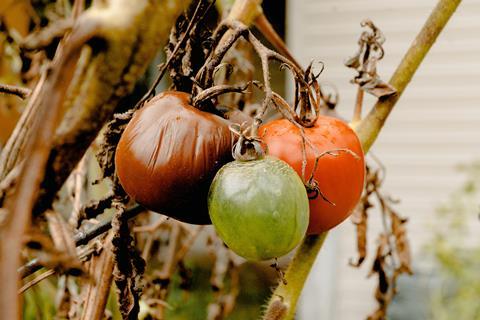
The food served on our plates is delivered by what is arguably the world’s largest industry. Highly complex and interlinked, it employs more than one billion people globally – to grow, process, transport, market, cook, pack, sell or deliver food.
Over the past 100 years the global food industry has made some major achievements. More people than ever before have access to affordable food and enjoy security of supply. But this has come at a steep price, both to the environment and society.
Millions of acres of forests have been lost to agricultural land, which consumes vast amounts of water. An estimated 1.3 billion tonnes of food are wasted every year, with global food waste producing more greenhouse gas than all commercial flights. When food is wasted, the energy and water it takes to grow, harvest, transport and package it is also wasted. And if food ends up going to landfill and rots, it also produces methane – a harmful greenhouse gas.
Not only is food waste an environmental concern, it’s also happening while more than 600 million people globally go hungry, a situation that has been exacerbated by Covid-19. One in five deaths can be attributed to malnutrition and more than 144 million children under the age of five suffer stunted growth because they don’t get enough nutrition. At the same time, more than 1.9 billion adults are overweight. These often-conflicting pressures mean the current situation is unsustainable.
The resources required to sustain the global food industry are colossal: 50% of the planet’s habitable land and 70% of freshwater demand is taken up by agriculture. The food industry’s impact goes far beyond the food system itself. It affects climate, energy, water, land use, biodiversity and culture. Almost half of climate-changing emissions currently come from the global management of land and the production of food and goods.
The global food industry has a critical role to play in helping the world to meet the UN’s Sustainable Development Goals. But this potential cannot be fulfilled without the industry’s adoption of the circular economy, which keeps materials and resources in use for as long as possible.
So what does a circular economy for food look like?
It has a focus on returning nutrients to farms, regenerating soils and reducing reliance on artificial fertilisers. It means recovering valuable chemicals and energy, providing renewable food stocks and stimulating the bio-economy.
A circular economy encourages diversity of production, with shorter supply chains and reduced waste, creating local jobs and building resilience. It harnesses digital technologies to measure, track and locate food and other organic materials. This enables better management of resources and reduces waste. It also has a greater focus on the local production of food.
Our view is that a circular economy adoption for food is essential to respond to the urgent challenges facing people and planet.
That’s why we are proud to sponsor London’s Circular Economy Week (14-18 June), which showcased inspiring circular economy approaches and promoting polices, practices and behaviours that can accelerate the growth of the circular economy and place it firmly on the agenda ahead of COP26. As part of Circular Economy Week, we have just launched a new Global Food Loss and Waste Tracker, an innovative online platform to help households and businesses track and prevent food waste.
The transition to a circular economy is not just about meeting the SDGs. It is what consumers expect from the food industry. They are demanding change in how food arrives on their plate. The pandemic has exposed the vulnerability of supply chains and focused attention on where our food comes from, and customers expect us to do better.
We must seize the once-in-a-lifetime opportunity to accelerate the move towards sustainability in global food production. The case for change is clear – and the circular economy offers a practical and viable approach.



















No comments yet